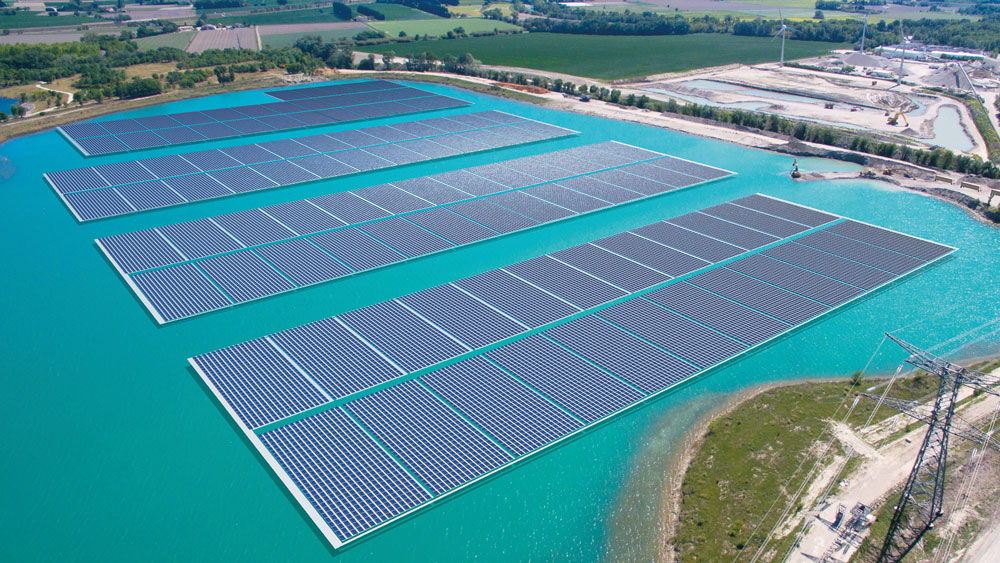In news
The country’s biggest floating solar power plant, by generation capacity, till date being developed by NTPC in the reservoir of its thermal plant at Ramagundam in Peddapalli district of Telangana is set to be commissioned by May-June next
Floating Solar Plant
A floating solar plant refers to an installation of solar power production that is mounted on a structure floating on a body of water. It may typically be on an artificial basin or a lake.
Types of Solar plants
- FPV or Floating photovoltaic plant which uses photovoltaic panels mounted on the platform
- The concentrated solar power plant which uses mirrors to redirect the solar power to a tower.
Significance
- No land required: The project is mainly advantageous as they do not consume much land. There are limited surfaces that are required for electric cabinets and grid connections. The price is almost equal to the land-based plants.
- Installation and decommissioning: Floating Solar Power Plants are compact compared to land-based plants. Thus their management is easier along with their construction and decommissioning later.
- No fixed structures are involved in this type of plant which leads to easier uninstallation too.
- Water-Saving: The partial coverage of basin aids in the reduction of water evaporation. This result depends on climate conditions and the percentage of the covered surface. The water can be used for irrigation purposes too.
- Cooling: The floating power plant allows the usage of a simpler cooling system. The cooling mechanism although is natural but also can be activated by generating a water layer on the PV modules or using submerged PV modules.
- Storage is aided through the presence of water. The plants use gravity energy storage mainly while coupling with hydroelectric basins.
- Environment friendly: A side advantage of such a plant is in the containment of algal bloom, a serious problem in industrialized countries.
Source: The Hindu





